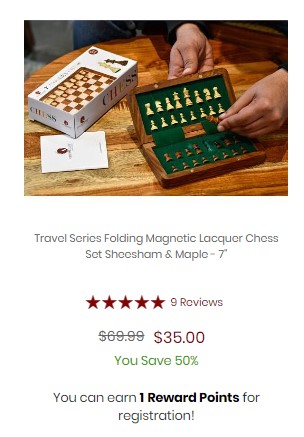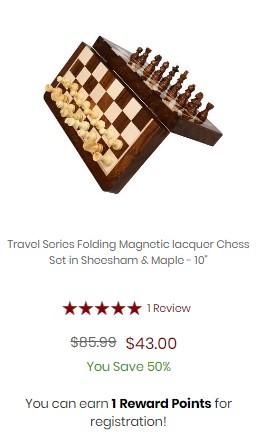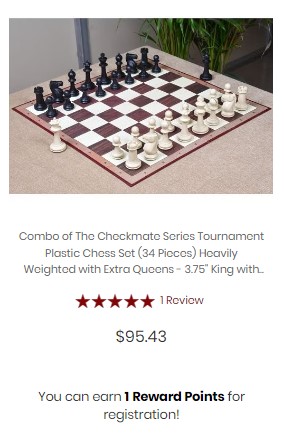Introduction – We all know chess has been around for about 1500 years. With time it’s quite obvious the chess sets develop gradually both in design and function. From Staunton Chess Sets, Folding Chess Sets, Tournament Chess Sets, Analysis Chess Sets to Luxury Chess Sets, there are an array of chess sets available in the market and all have some of their specific usage and function. For instance tournament chess sets are merely suited for competitive matches as they have specific standards governed by official authorities – Bypassing this important aspect ends up with people buying a chess set that doesn’t meet their expectations. In this blog post, we’ll look at four most common mistakes that people make when buying chess set and provide tips for effective purchase.
Mistake #1: Ignoring the Importance of Chess Piece Size
The most common mistake that people make is ignoring the importance of chess piece size. While it’s important to understand the size of chess pieces is a crucial factor to consider when buying a chess set. The dimensions of the pieces can significantly impact playing experience, aesthetics, and overall enjoyment of the game. Pieces that are small as compared to a chess board can be difficult to handle and move, leading to an uncomfortable playing experience.
Tip #1: Consider Chess Board Compatibility
To ensure that chess pieces are compatible with a chessboard’s size, follow these steps
- Know Chessboard’s Square Size: Measure the dimensions of the squares on chessboard. Standard square sizes are around 2.25 to 2.5 inches per side for tournament play, but sizes can vary. Note down the measurements of square size.
- Ratio of Piece Height to Square Size: The height of the king should be around 1/3 to 1/2 the size of the square. For example, if squares are 2.25 inches, the king should be about 0.75 to 1.125 inches in diameter at the base. This ratio ensures that the pieces fit comfortably on the squares without overcrowding.
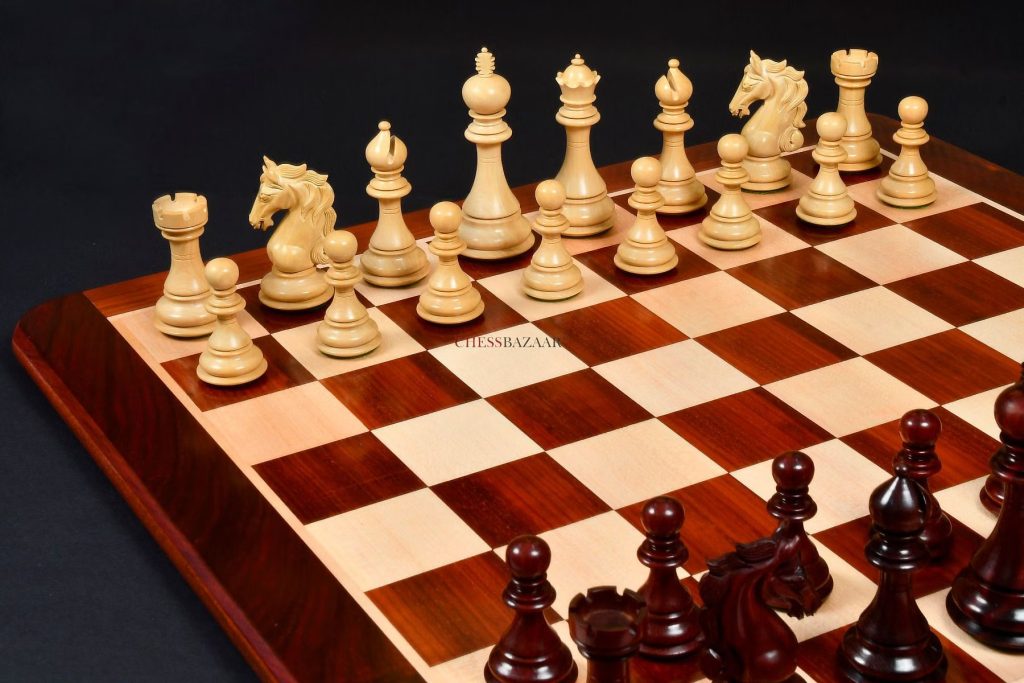
Tip #2: Buy It Individually
Without delving into chessboard compatibility, individuals can also purchase chess pieces and chess boards separately, for added convenience. When someone buy chess pieces and boards individually, they can ensure that the sizes of the pieces and the squares on the board match perfectly. This eliminates any compatibility issues and creates a balanced set. However, one needs to ensure that the pieces and board they are going to buy must be compatible with each other. Fails to do so might result in ‘Dissatisfaction’. One can also get in touch with skilled artisan or specialty chess stores specializing in custom chess sets. They can help provide the best solution. Additionally, asking questions about board compatibility on chess online communities like Chess.com can provide helpful insights from members who are experienced in selecting chess sets.
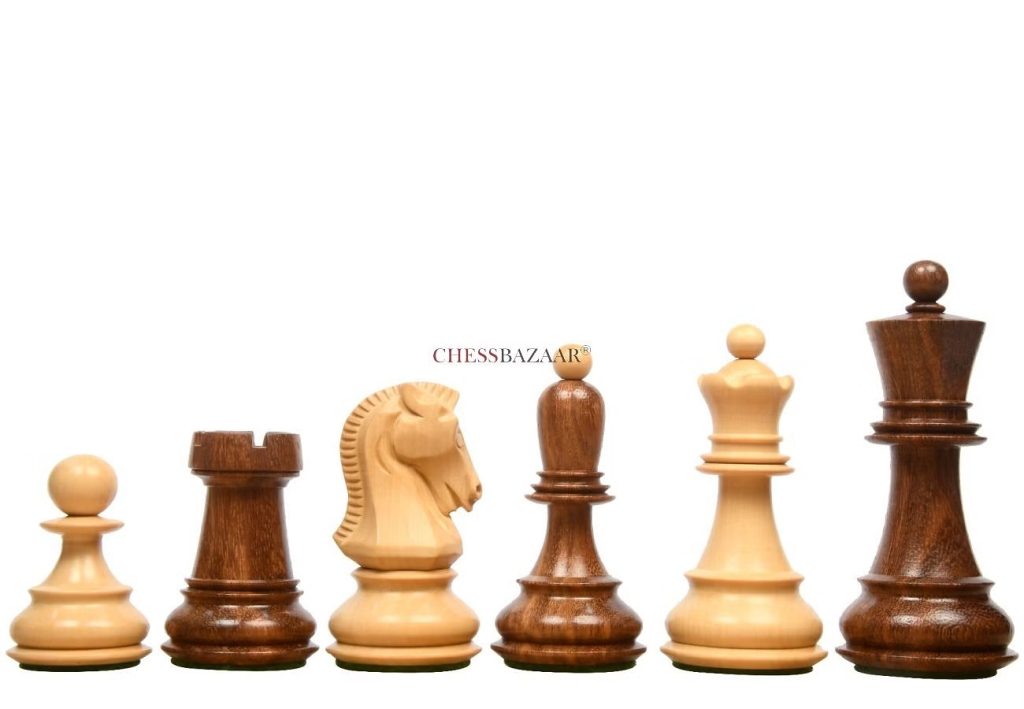
Mistake #2: Not Considering Chess Board Square Sizing
This is another common mistake people would make, they ignore square size when selecting a chess board for themself. We know that the size of the squares is crucial for gameplay. If the squares are too small or too large for the pieces intended to be used, it can often lead to awkward movement, overcrowding and piece collisions on the chess board.
Tip #3: Try Using Recommended Square Sizing
Recommended Square Sizing is as follows:
- Chess board square size is 2.0″ – 2.25″
- Chess board square size for king height of 3.75″ is 2.0″
- Chessboard size for king height of 3.9″ or 4.0″ is 2.25″
However, it’s practical and one needs to choose the ideal size for square sizing when matching it with chess pieces.
Related: How to Measure a Perfect Chessboard for a Particular King Size?
Mistake #3: Thinking Expensive is Good
Another common mistake people widely make is purchasing a chess set by using the ideal stereotype i.e. Expensive = Good. The allure of a chess set isn’t just about the price tag; it’s about the ‘QUALITY‘. Relying solely on the perspective that expensive equals good can lead people to several consequences. This mindset might not only lead to financial strain but also can hinder the exploration of diverse options, preventing individuals from discovering hidden gems that offer exceptional quality without the hefty price tag.
Tip #4: Focus on Quality, As It Matters A Lot
An expensive chess set might catch the eye, but the quality captures the heart. So, instead of getting into expensiveness, one can dive deep into the quality. Finest quality chess set not only enriches gaming experience but also lasts for decades.
Tip #5: Emphasize the Importance of Craftsmanship
A high-quality chess set showcases skilled craftsmanship in the design and detailing of each piece. It creates a meaningful connection to the game, the artistry, and the heritage of chess. Craftsmanship often results in distinctive and recognizable designs for each chess piece. A clear and distinguishable design is crucial for easy and efficient gameplay, particularly when identifying pieces like knights and pawns. So, instead of getting into the expensiveness of the chess, one must look into the artistry of the chess sets.
Tip #6: Look for Materials Used in Chess Set
The choice of materials greatly influences the quality and durability of the set. Quality sets often use materials like solid wood, hand-carved stone, or metal tend to be more durable and resilient over time compared to sets made from lower-quality materials. It’s worthy to note that expensive items might lose value due to changing trends, items made from good materials tend to retain their value better. The designs of the chess sets are beautifully carved out from some of the finest woods, holding high durability and natural beauty in colors such as Ebony, Bud rosewood, Sheesham and Indian rosewood. Moreover quality materials have a natural beauty and aesthetic appeal that cannot be replicated by altered items.
Important to Note: Ebony and Indian rosewood are rare and difficult to source so it can cost people more. Another one is Bud Rosewood – a wine-red color deep in color, interlaced with orange grains, procured from Africa. Wood like Bud Rosewood is prominently used in luxurious chess sets. So one who has a limited budget; Sheesham(Golden Rosewood) and Ebonized Boxwood are their go-to sources for selecting quality materials.
Related: Different Types of Woods Used In a Handmade Chess Set
Mistake #4: Avoiding Personal Preferences
Reduced satisfaction, lack of connection, and limited engagement are several consequences that people encounter when they avoid their personal preferences when buying a chess set.
Tip #7: Look for Personal Preferences
By ingeniously emphasizing personal taste and preferences, people can be guided to make informed decisions. Additionally, considering the purpose of the purchase can tremendously help in finding the best solution.
Conclusion
Buying chess set can be a tiresome, even challenging process in itself; but by avoiding these common mistakes and following these tips, people can effectively become better at buying chess sets.
